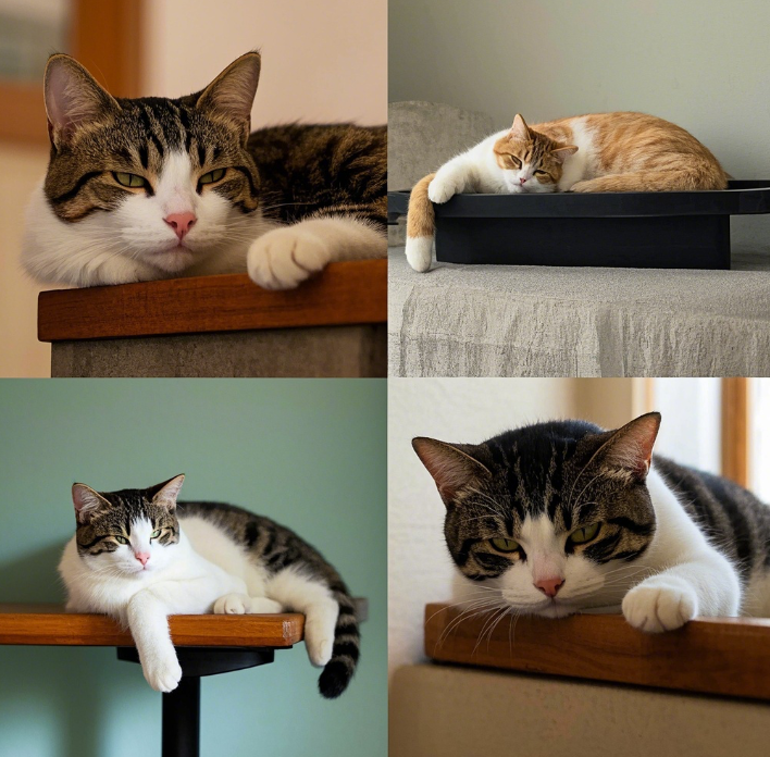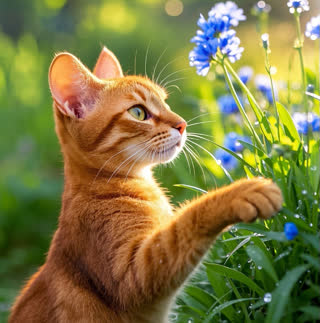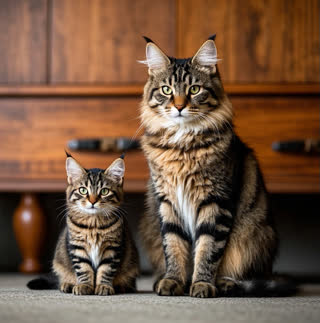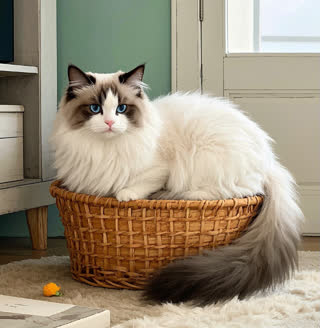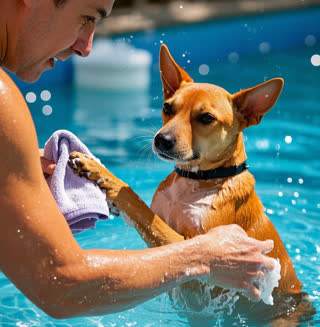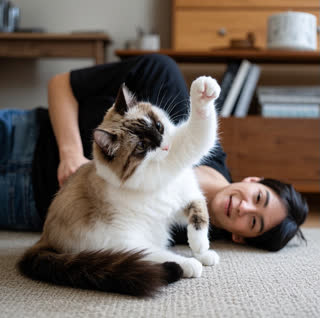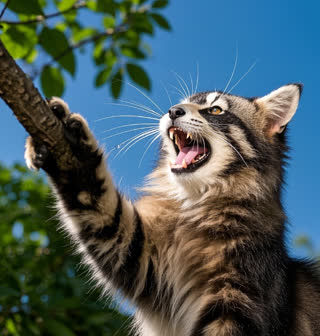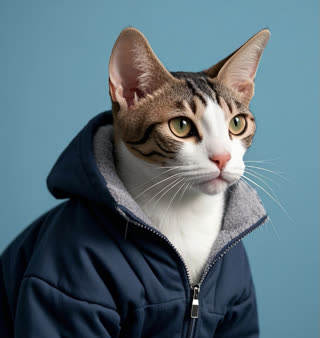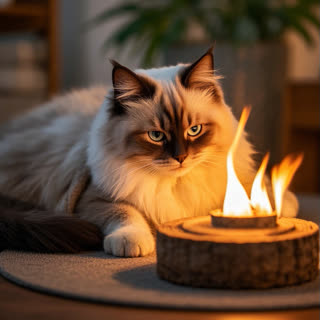As any cat owner knows, our feline friends spend a significant portion of their lives sleeping—up to 16 hours a day! But beyond catching up on rest, a cat’s sleeping posture can reveal a wealth of information about their mood, health, and trust levels. In this guide, we’ll decode the most common cat sleeping positions and explore what they really mean for your furry companion.
1. The Loaf Position: Comfort and Contentment
One of the most recognizable cat sleeping positions is the “loaf,” where your cat tucks their paws under their body and sits upright. This pose is often a sign of relaxation and security. Cats in a loaf position are typically calm and comfortable in their environment. They’re not fully asleep but are alert enough to react if needed. If your cat often sleeps this way, it’s a good indication they feel safe in their surroundings.
Why It Matters: The loaf position also helps cats conserve body heat, making it a practical choice for cooler temperatures. However, if your cat suddenly switches to this pose more frequently, it could signal discomfort or joint pain. Always monitor changes in behavior to ensure their well-being.
2. Belly-Up Bliss: Trust and Vulnerability
A cat sleeping on their back with their belly exposed is a heartwarming sight—but it’s also a bold statement. This cat trust sleeping position shows your cat feels completely safe and secure around you. By exposing their vulnerable underbelly, they’re signaling that they trust you implicitly. However, don’t be fooled—this doesn’t mean they’re open to belly rubs! Most cats keep their claws and reflexes ready, even in this relaxed state.
What Do They Mean? This position also helps cats regulate body temperature. If your cat sleeps belly-up often, celebrate the bond you’ve built! Just approach with caution to avoid startling them.
3. The Cuddle Puddle: Seeking Warmth and Companionship
Cats that curl into a tight ball or nestle into blankets are likely seeking warmth and comfort. This cat body language sleeping posture is especially common in kittens and older cats, who may need extra warmth. However, it can also indicate stress or anxiety. If your cat usually sleeps stretched out but suddenly starts curling up, it’s worth checking if they’re feeling unwell or if there’s a change in their environment.
4. Sleeping at Your Feet: Bonding and Protection
Why do cats sleep at your feet? This behavior is rooted in both instinct and affection. Historically, cats would sleep near their human’s feet to protect them from potential threats. Today, it’s often a sign of loyalty and companionship. By choosing this spot, your cat is signaling they see you as part of their “pride” and want to stay close.
What It Means for You: If your cat prefers sleeping at your feet over other spots, cherish it! It’s a testament to the trust and love they feel toward you. Just be prepared for some midnight toe wiggling.
5. The Side Splitter: Deep Sleep and Muscle Relaxation
When a cat sleeps on their side with legs stretched out, they’re likely in deep sleep. This cat sleeping position allows their muscles to relax fully, and you might even hear gentle purring or twitching as they dream. Cats in this pose are completely at ease and aren’t worried about their surroundings.
Health Check: If your cat struggles to get comfortable in this position or avoids it altogether, it could indicate joint stiffness or pain. Consult your vet if you notice any changes.
6. The “Kneading” Sleeper: Happy Memories
Kittens knead their mother’s belly to stimulate milk flow, and many cats carry this behavior into adulthood. If your cat kneads the bed or your lap before settling down to sleep, it’s a sign of contentment and nostalgia. This action is often paired with purring and slow blinking, reinforcing their sense of security.
7. The High Perch: Alertness and Territory
Cats are natural climbers, so it’s no surprise they often sleep in high places like shelves or window ledges. This cat body language sleeping choice reflects their need to survey their territory and stay vigilant. If your cat prefers these spots, ensure they’re safe and secure to prevent falls.
Understanding Your Cat’s Sleep Needs
While these cat sleeping positions offer insights into your pet’s state of mind, it’s essential to remember that every cat is unique. Some may have preferences based on breed, age, or past experiences. For example, senior cats may opt for softer, more supportive beds, while kittens might sleep more erratically as they explore their environment.
Key Takeaways:
Consistency: Monitor your cat’s typical sleeping habits to spot changes.
Health: Sudden shifts in posture or increased sleepiness could signal health issues.
Bonding: Use your cat’s sleeping behaviors to strengthen your relationship—offer cozy beds, gentle pets, and a stress-free environment.
Final Thoughts
Decoding cat sleeping positions is a fascinating way to deepen your connection with your feline friend. Whether they’re loafing, belly-up, or curled at your feet, each pose tells a story about their comfort, trust, and well-being. By paying attention to these subtle cues, you can ensure your cat feels loved, safe, and content in their forever home.
Decoding cat sleeping positions is a fascinating way to deepen your connection with your feline friend. Whether they’re loafing, belly-up, or curled at your feet, each pose tells a story about their comfort, trust, and well-being. By paying attention to these subtle cues, you can ensure your cat feels loved, safe, and content in their forever home.
So next time your cat drifts off to sleep, take a moment to observe their posture—you might just learn something new about the mysterious, wonderful world of your feline companion! 🐾
